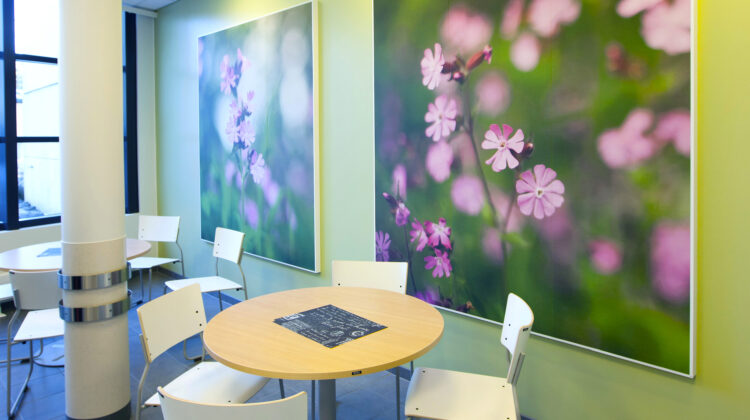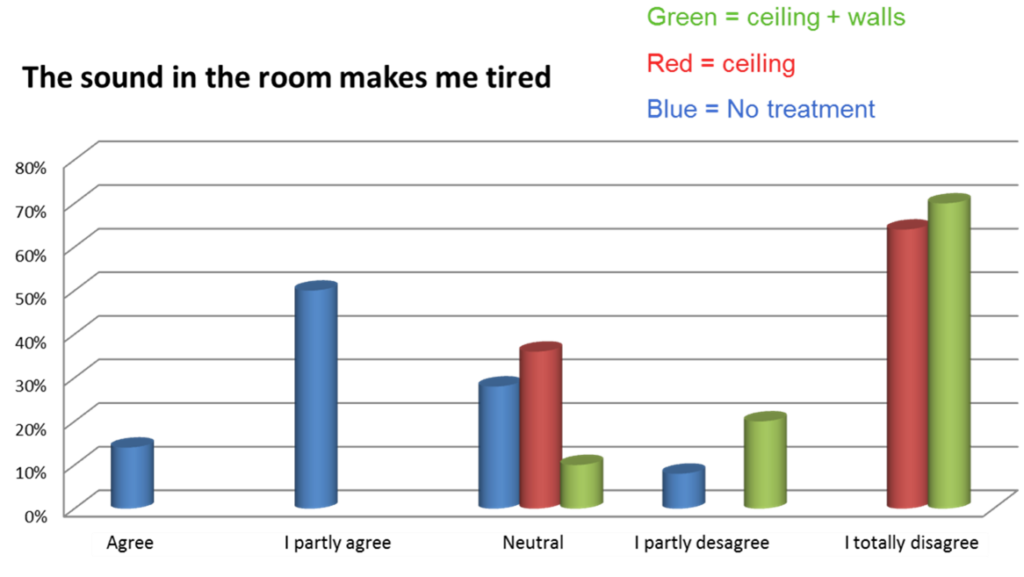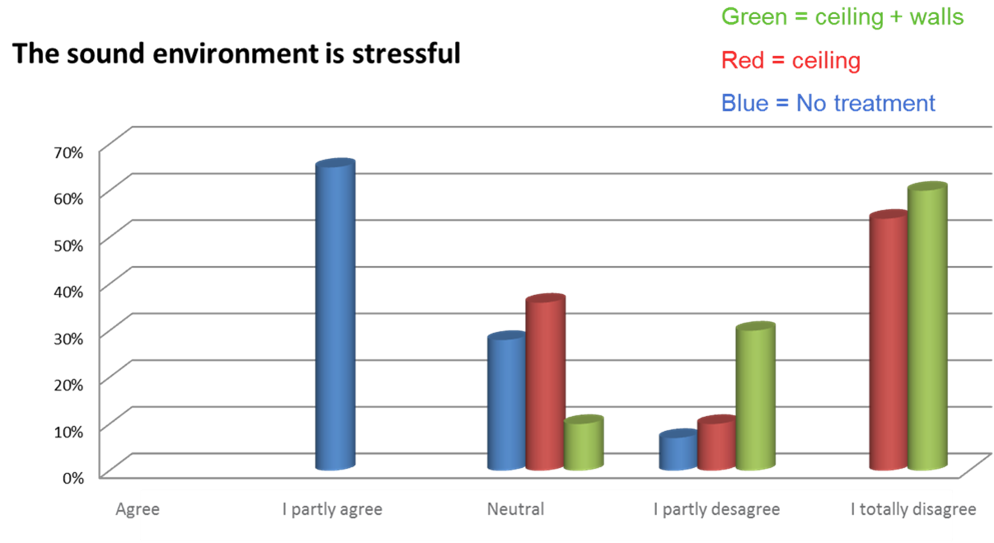
Vertical acoustics an important asset in healthcare
National standards in the Healthcare are lacking
In many countries, national standards, regulations, and guidelines are lacking in the healthcare segment. One could therefore say that in many cases building hospitals, elderly care homes, and psychiatric wards is the ‘wild west’ regarding acoustics. We are lucky when new buildings are done – because if there is a standard – we can follow it and the demands are often communicated with reverberation time. The old buildings are on the other hand rarely suited for the purpose and the activity of today. Reverberation time is a good indicator of the acoustics of the room – but it is a challenge when it is the only descriptor.
A hospital has a complex task to solve and the ‘old thoughts’ about reverberation time and acoustic material on one surface only as the only way to evaluate the room are not enough.
But what will it mean to the end users if we aim to evaluate other descriptors than reverberation time by implementing the thought of ‘vertical acoustics’. What happens when we realize that acoustic material on one surface only is so last decade?
A research study in Denmark
At Hvidovre Hospital in Denmark, a study took place a few years ago. The research aimed to find out what consequences acoustic treatment would have on staff members. The scope was to find out if vertical acoustics and then better values on C50/D50 would have any ‘extra’ effect on behavior and attitude. Three identical rooms for an identical purpose (OR) were treated differently. either no treatment, with an absorbing ceiling only or an absorbing ceiling and wall treatment. The study was designed as a blind study.
The results showed a clear tendency. In the room with both an acoustic ceiling (Class A) and wall panels (Class A) the staff felt less stressed, and tired and had the feeling that they made fewer mistakes. It was predicted that the room with no treatment at all would be the less preferred room, but the findings about the need for vertical acoustics were new and interesting.
We need more research to learn about what is important for both staff members and patients in healthcare facilities. This study really shows that evaluating more descriptors than reverberation time can be valuable. The numbers on reverberation time nearly didn’t change between the rooms with ceiling only and ceiling + wall panels, but D50 improved by almost 25%! The subjective response from the staff in this case maybe explains more than the obvious objective room acoustic improvement. (Read an interview with staff members from another hospital here).
Sabine and the diffuse sound field
The well known Sabine equation is based on a theoretical condition impossible to obtain in reality which is the diffuse sound field. The typical acoustic solution in healthcare facilities has the absorption material on one surface only (the ceiling). And the decay typically doesn’t follow a straight line according to the theory . It will be split in an early part correlating more or less to the theory and a late part with a longer reverberation time. Furthermore, the grazing soundfield will not be evaluated using the formula.
Reverberation time is commonly measured over a 20 or 30 dB range starting 5 dB below the initial level, and then extrapolated to the full 60 dB range. Starting 5 dB below can be problematic since this part of the decay contains a lot of information. It contains both direct sound and early reflections – that are crucial for the perception of sound and speech clarity.
In other segments research about other acoustic descriptors are developing and the ISO3382-3 is a good example of how the understanding of activity based design should look like when we design offices. In the Scandinavian countries we also often see Speech Transmission Index and Clarity C50 and/or Definition (Deutlichkeit) D50 used in the evaluation of classrooms to secure optimum room acoustics for the activity.
When we look at activity based design – no matter what room type – reverberation time should not be the only descriptor.




